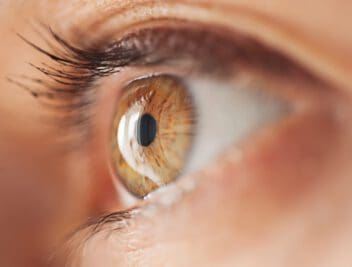
Medically Reviewed by Dagny Zhu, M.D.
Epi-LASIK Surgery: How It Differs From Regular LASIK
Home / Laser Eye Surgery Guide (Updated) /
Last Updated:

Medically Reviewed by Dagny Zhu, M.D.

Article At a Glance
Epi-LASIK is a laser eye surgery that reshapes the cornea to correct vision, making it a good option for those with thin corneas who may not qualify for LASIK. Instead of creating a flap, the outer corneal layer is gently separated and repositioned after treatment. Recovery is slightly longer than LASIK but typically involves less discomfort than LASEK. Patients may experience temporary glare or halos, but results are long-lasting. A consultation with an eye surgeon can determine if Epi-LASIK is the right choice for vision correction.
Table of Contents
LASIK is one of the original laser-based procedures to correct vision problems like nearsightedness and farsightedness, but with advances in technology, there are several ways to reshape the cornea that are minimally invasive and have short healing times. Epi-LASIK is one of these. The goal of this procedure is to reduce post-operative pain, speed up healing, get better improved vision faster with a shorter outpatient surgery, and reduce side effect risks.
Epi-LASIK does reduce pain for most people, and the procedure is faster so there is a shorter healing time after the operation. Reports have been mixed about whether side effects are reduced, including corneal haze, which is a potentially chronic vision problem.
If you are thinking about a LASIK procedure, epi-LASIK works well for many people because of its high level of convenience. Many experience benefits from the surgery within just 24 hours after the operation.
Refractive Surgeries Now Include Epi-LASIK
If you are one of the millions of people in the United States who struggle with a refractive error leading to poor eyesight, you have likely heard of LASIK, and you may be interested in this approach to restoring normal vision. Refractive errors are eye conditions caused by the shape of the cornea, which refracts light onto the retina. Average-shaped corneas refract light to exactly the right point on the retina for a clear picture, and different shapes to the cornea cause blurry vision or trouble focusing on objects. Types of refractive errors include:
- Myopia (nearsightedness)
- Hyperopia (farsightedness)
- Astigmatism
- Presbyopia (farsightedness due to age)
You deserve clear vision. We can help.
With 135+ locations and over 2.5 million procedures performed, our board-certified eye surgeons deliver results you can trust. Your journey to better vision starts here.
The LASIK process shaves layers of cells off the cornea to reshape it, allowing normal refraction onto the retina, so you can focus on objects near and far, seeing a clear picture of the world. You may use the term LASIK to describe several potential procedures. Your optometrist or ophthalmologist can help you understand the difference between procedures and which one may work better for you.
LASIK is the abbreviation for laser-assisted in-situ keratomileusis, but other procedures include radial keratotomy (RK), photorefractive keratectomy (PRK), laser epithelial keratomileusis (LASEK), and epi-LASIK, which is similar to LASEK. LASEK and epi-LASIK are both based on the original LASIK procedure, but they involve slightly different processes.
What Is Epi-LASIK and How Does It Compare to Other Refractive Surgeries?
LASEK involves an alcohol solution producing epithelial detachment on the cornea; the solution is rinsed off, the epithelium flap is removed, and then laser ablation is performed to reshape the cornea. In traditional LASIK, that flap is removed with a very small, sharp knife, and in some newer procedures, the flap is removed with a second set of lasers. Although LASEK was first pioneered in 1996, and approved by the U.S. Food and Drug Administration (FDA) shortly after that, epi-LASIK has largely replaced the procedure because there is no alcohol solution involved, reducing the risk of damage from the solution and shortening the recovery time after surgery.

In epi-LASIK, an epithelial flap is created with a microkeratome, a device that holds some of the cornea in place with a blade attachment that cuts the flap. Using this device to carefully create the epithelial flap, rather than cutting with a blade or laser and then chemically forcing the separation of the flap, preserves more of the epithelial cells. More recent versions of epi-LASIK replace the flap for healing purposes, but in the original procedure, it was fully removed.
Both LASEK and epi-LASIK processes were created to reduce post-operative pain, increase the speed of tissue recovery and the return of visual acuity, and reduce post-operative haze formation — a more prevalent problem with LASIK and PRK, according to studies. Both LASEK and epi-LASIK use LASIK procedures to modify the shape of the cornea once the epithelial flap is removed; however, the greatest difference between epi-LASIK and any other refractive surgery procedure is how that epithelial flap is created.
Epi-LASIK Steps
When undergoing epi-LASIK, the steps of the procedure include:
- Anesthetic eye drops are put into the eye undergoing the procedure.
- The epithelial flap is created by separating the top epithelial layer from the cornea.
- The sheet is pushed off to the side.
- An excimer laser reshapes the underlying corneal tissue.
- The epithelial sheet is, most likely, returned to its original position.
- A bandage contact lens is applied, which will be removed a few days later.
After the procedure, you will receive prescriptions for eyedrop painkillers — typically anti-inflammatory drugs — and an antibiotic to reduce the risk of infection. You will also need to wear a protective eye mask while you sleep to protect your healing eyes. You may experience discomfort for a day or two after surgery, but your vision should immediately begin to improve. Within a week, you should have normal vision. While it is recommended that you take a few days off work to reduce eye strain, some people report that they were able to go back to work the next day.
Benefits of Epi-LASIK
A comparison of PRK, LASEK, and epi-LASIK investigated 100 instances of both LASEK and PRK, along with 97 instances of epi-LASIK, involving patients who had relatively high myopia prior to their procedure. Levels of post-operative pain, uncorrected visual clarity, and corneal haze were measured on days one, four, and seven, and then in months one, three, and six. A final follow-up was done one year following surgery.
Patients who had undergone epi-LASIK reported less post-operative pain in general, but in particular, in the first and fourth days after surgery. However, visual recovery was better in the PRK group in the first week. By the fourth week after surgery, or one month, all three types had equal visual recovery, so none are better overall than the others.

Among those who had undergone epi-LASIK, there was less corneal haze reported at the six-month and one-year follow-up points compared to LASEK and PRK. The procedure has greater benefits in reducing pain on a short-term basis and reducing visual side effects on a long-term basis.
Other reports from eye surgeons found that there was greater visual recovery in the short term after surgery, allowing for bilateral procedures, which increases convenience for the patient. In 2007, one surgery group reported that on the first day after the operation, 60 percent of eyes had 20/40 or better vision; in contrast, about 20 percent of people who had LASEK or a similar procedure involving an alcohol solution reported the same results. At three days after the operation, 75 percent of epi-LASIK patients reported 20/40 vision or better; and at one week, 90 percent reported 20/40 or better vision. When epi-LASIK was performed bilaterally, 75 percent of patients reported that they had 20/40 or better vision within one day after surgery.
Additionally, epi-LASIK is a little faster than LASIK, LASEK, or PRK. One surgeon reported that epi-LASIK took between three and five minutes per eye compared to traditional LASIK, which takes about 30 minutes total. The costs of epi-LASIK are comparable to LASIK, and there may be some insurance coverage.
Who Qualifies for Epi-LASIK?
Your ophthalmologist will recommend an Epi-LASIK procedure if you don’t qualify for LASIK. Although similar to LASIK and LASEK in that the surgeon reshapes the cornea, in this procedure there is no flap-cutting.
That makes Epi-LASIK suitable for people with abnormally thin corneas. These thin corneas are what disqualify some patients from having LASIK.
Epi-LASIK is also the surgical option for people who have dry eyes, another LASIK disqualifier.
Other people who are good candidates for Epi-LASIK are people who have physical occupations (such as athletes, construction workers and first responders) and people who enjoy active lifestyles (weekend athletes, tennis and pickle ball players, hikers, runners, etc.). Basically, anyone who could put themselves in a situation where their eyes can get struck or injured should look at Epi-LASIK as sight remedy.
Similarly, Epi-LASIK works well in conditions where LASIK procedures are disallowed. For example, you don’t qualify if you work in professions requiring heavy computer usage.
Who Does Not Qualify for Epi-LASIK?
On the other hand, stay away from Epi-LASIK if you have acute nearsightedness (high myopia) as this can cause unpredictable results, with high chances of complications and regression.
Finally, you shouldn’t go through Epi-LASIK if you’re pregnant or breastfeeding or if you have uncontrolled connective tissue or autoimmune disease.
You deserve clear vision. We can help.
With 135+ locations and over 2.5 million procedures performed, our board-certified eye surgeons deliver results you can trust. Your journey to better vision starts here.
Do all Doctors Offer Epi-LASIK?

For the most part, surgeons prefer performing Epi-LASIK, especially on people with thin cornea tissue or large pupils.
Epi-LASIK has a high rate of success and is safer than conventional LASIK in certain use cases, such as people in professions that may get hit in the eyes.
The surgeon does not use alcohol during the operation, unlike in LASEK. Using alcohol destroys some of the epithelial cells, dampening the results of the procedure. That partly explains why surgeons prefer Epi-LASIK to LASEK.
Epi-LASIK avoids dry eyes, and it doesn’t remove any nerve endings (denervate) in the cornea, allowing for further treatment years later. What’s more, the procedure offers faster epithelial wound closure and visual recovery.
However, not all doctors will offer Epi-LASIK if you are not a suitable candidate. For example, you risk clouding if you perform the procedure while suffering from a high degree of nearsightedness.
Does Epi-LASIK Cost the Same as LASIK?
The costs of both procedures are similar: about $2,000 per eye. That cost depends on and can change according to:
- Your exact medical needs
- The amount of customization required during the procedure
- The experience (and cost level) of your doctor
- Where you live
In addition, if your surgery involves wavefront mapping, that could cost you up to $1,000 more.
If it appears you’re going to be confronted by a budget-busting price tag, you should inquire with your doctor’s front office staff about financing. Even if the eye doctor doesn’t offer a payment plan, there’s a chance the office manager can turn you onto a company that specializes in medical financing so that you can get the procedure that you want and when you want it.
Risks of Epi-LASIK
Although epi-LASIK is intended to reduce complications compared to LASIK, PRK, and LASEK, more recent studies do not show that this is inherently the case. The study referenced above is one that shows less pain and better vision overall, but other studies suggest that there is not a significant improvement for larger survey groups. There are also other side effects that are still a small risk after epi-LASIK, just like LASIK or LASEK procedures.
There are risks associated with epi-LASIK.
- Dry eyes
- Poor night vision
- Glares or halos
- Light sensitivity
- Corneal haze
- Incomplete or inaccurate vision correction, including overcorrection
- Infection after the surgery
These side effects are unlikely, but they carry the same level of risk as LASIK or related refractive procedures.
Epi-LASIK Is One Great Option Among Many
If you want to get normal vision and not have to wear glasses or contact lenses, you may wonder about LASIK. Thanks to advances in technology, there are now several versions of LASIK, including epi-LASIK, that may work better for you. Epi-LASIK has been shown in some people to reduce pain and improve healing rate, but this may not be true for everyone. It is important to consult with an optometrist who can give you a full vision exam and help you understand which procedure will benefit you most.
You deserve clear vision. We can help.
With 135+ locations and over 2.5 million procedures performed, our board-certified eye surgeons deliver results you can trust. Your journey to better vision starts here.
References
- Medical Devices: What Is LASIK? (July 11, 2018). U.S. Food and Drug Administration (FDA).
- LASEK. (April 19, 2018). EyeWiki: American Academy of Ophthalmology (AAO).
- Epi-LASIK. American Academy of Ophthalmology (AAO).
- Microkeratome. American Academy of Ophthalmology (AAO).
- Experts Revisit Epi-LASIK. (April 2006). American Academy of Ophthalmology (AAO).
- Epi-LASIK Laser Eye Surgery – An Alternative to LASIK. Refractive Surgery News.
- PRK vs. LASEK vs. Epi-LASIK: A Comparison of Corneal Haze, Postoperative Pain and Visual Recovery in Moderate to High Myopia. (July 2010). Nepalese journal of ophthalmology : a biannual peer-reviewed academic journal of the Nepal Ophthalmic Society : NEPJOPH.
- Epi-LASIK Offers Fast Recovery Time, Improved Patient Comfort. (September 15, 2007). Ocular Surgery News U.S. Edition.
- LASIK surgery: Is it right for you? (August 2021). Mayo Clinic.
- PRK, LASEK, and Epi-LASIK for Nearsightedness. (August 2020). The University of Michigan Health.

Dr. Dagny Zhu is a nationally acclaimed, Harvard-trained specialist in cornea, cataract, and laser refractive surgery. As a key opinion leader in advanced laser vision correction and cataract surgery, Dr. Zhu has been featured in over 200 lectures, presentations, publications, and press features.
This content is for informational purposes only. It may have been reviewed by a licensed physician, but is not intended to serve as a substitute for professional medical advice. Always consult your healthcare provider with any health concerns. For more, read our Privacy Policy and Editorial Policy.